A well-fed cat is a happy cat. His food must be high quality and, above all, suited to his needs. If you're a little unsure about how much dry food to give your cat, don't worry - we’ve got you. Here are a few insights and a handy tool to calculate the perfect portion size so you know the right amount to feed your cat each day.
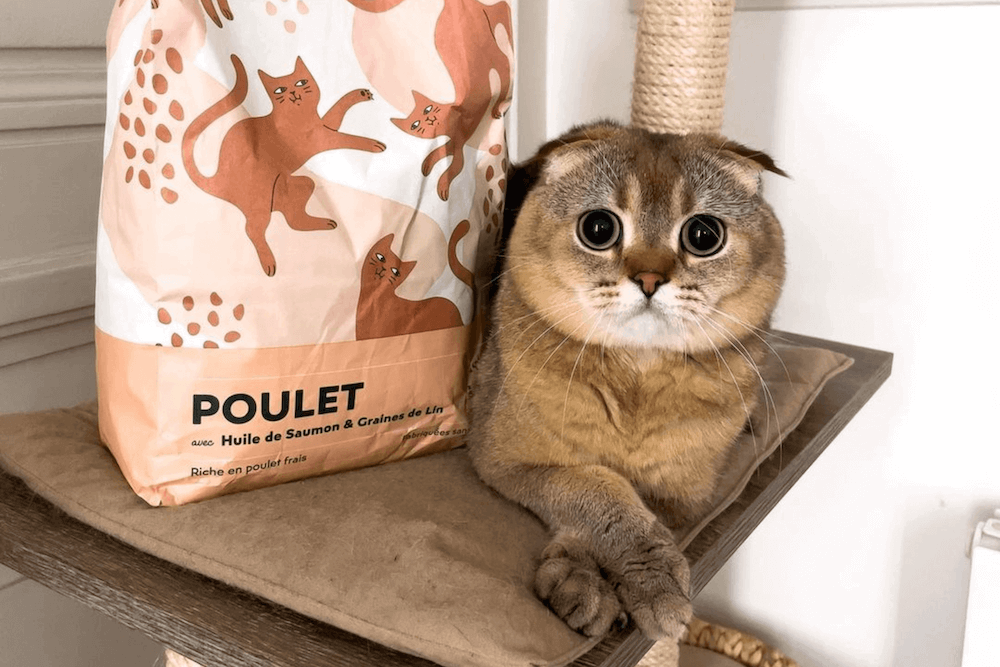
The right amount of kibble for your cat
Your cat is enjoyinghis delicious Ziggy kibble . But how much should you give him each day?
The amount of food you should give your cat each day depends on several factors. You should consider:
His age
A 2-year-old cat and a cat over 10 years old will not have the same energy needs. A senior cat will need a few more calories.
His weight
This is crucial because your cat's daily ration will depend on its optimal weight, i.e. its ideal weight (the weight it must maintain or reach to be healthy). If your little cat is overweight, its ration will need to be adapted so that it reaches its optimal weight. The same applies if it is underweight.
Remember that in our little companions, overweight and obesity can lead to serious health problems, such as urinary or kidney disease ( cystitis , kidney failure ), diabetes , certain heart diseases, osteoarthritis or even respiratory problems. And conversely: an underweight cat can suffer from nutritional deficiencies and have a weakened immune system.
How to determine your cat's ideal weight?
The best way to determine your cat's ideal weight is to ask your veterinarian for advice. Here again, several factors come into play, such as age, physical activity and breed.
On your side, however, you can base yourself on the weight your cat had at 12 months (one year). A small touch test can also tell you if your cat is thin, overweight or obese.
For example, if you can count his ribs without pressing, your little cat is at his ideal weight. On the other hand, if you have to press to count them, he is probably overweight. And if you can't feel his ribs, even if you press hard, your cat is probably obese. To learn more, find our infographic in our article dedicated to obesity in cats.
Sterilization or castration
After sterilization or castration, our furballs see their energy needs decrease by 20% on average… but not their appetite. To prevent your sterilized cat from gaining weight, it is therefore necessary to offer it a suitable diet and above all to limit the quantity of food made available to it.
His physical activity
A sterilized or non-sterilized cat with access to the outdoors for more than 5 hours has a slightly higher energy requirement than an indoor cat. Same thing for us: the plate of an athlete will not be the same as a person who works sitting all day for example.
His race
Some breeds have slightly higher energy needs, such as the Sphynx cat . With little to no fur to keep it warm, the Sphynx uses more energy to regulate its body temperature, and must therefore obtain this extra energy from its food. It is estimated that its caloric needs are 20% higher on average.
The type of food you feed him
The amount of food also depends on the type of food you give your cat: you will not give him the same amount of kibble as you would of pâté. Since kibble is a dehydrated food, it is actually more caloric (on average 4 times more) than wet food. It also depends on the kibble you choose; some kibble will be richer in calories than others. It will therefore be important to adapt the amount of food according to the energy value of the food chosen for your cat.
Knowing your cat's energy needs
To know your cat's maintenance energy requirement (MES), it is possible to do a small calculation.
- For a sterilized outdoor cat: 50 x its optimal weight
- For a sterilized indoor cat: 45 x its optimal weight
- For an unsterilized indoor cat: 55 x its optimal weight
- And for an unsterilized outdoor cat: 60 x its optimal weight.
Let's take the example of Maya and Ibra.
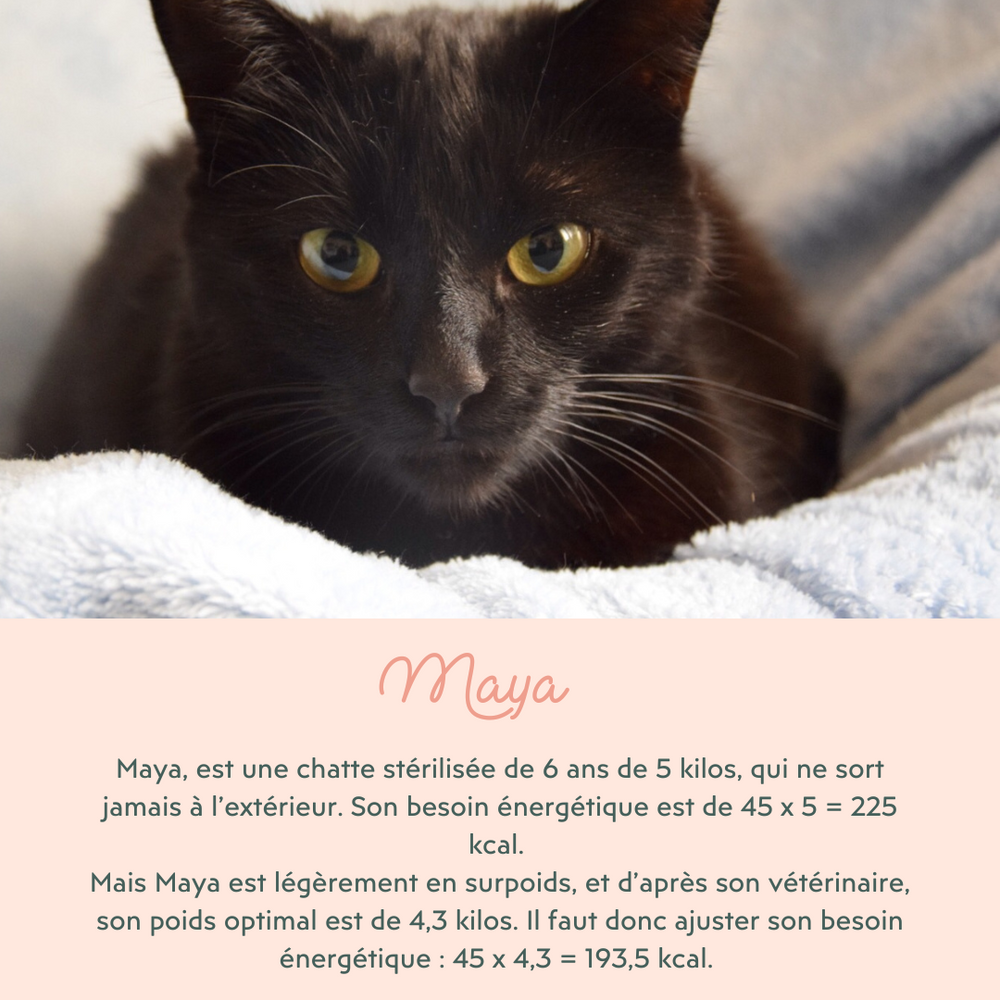
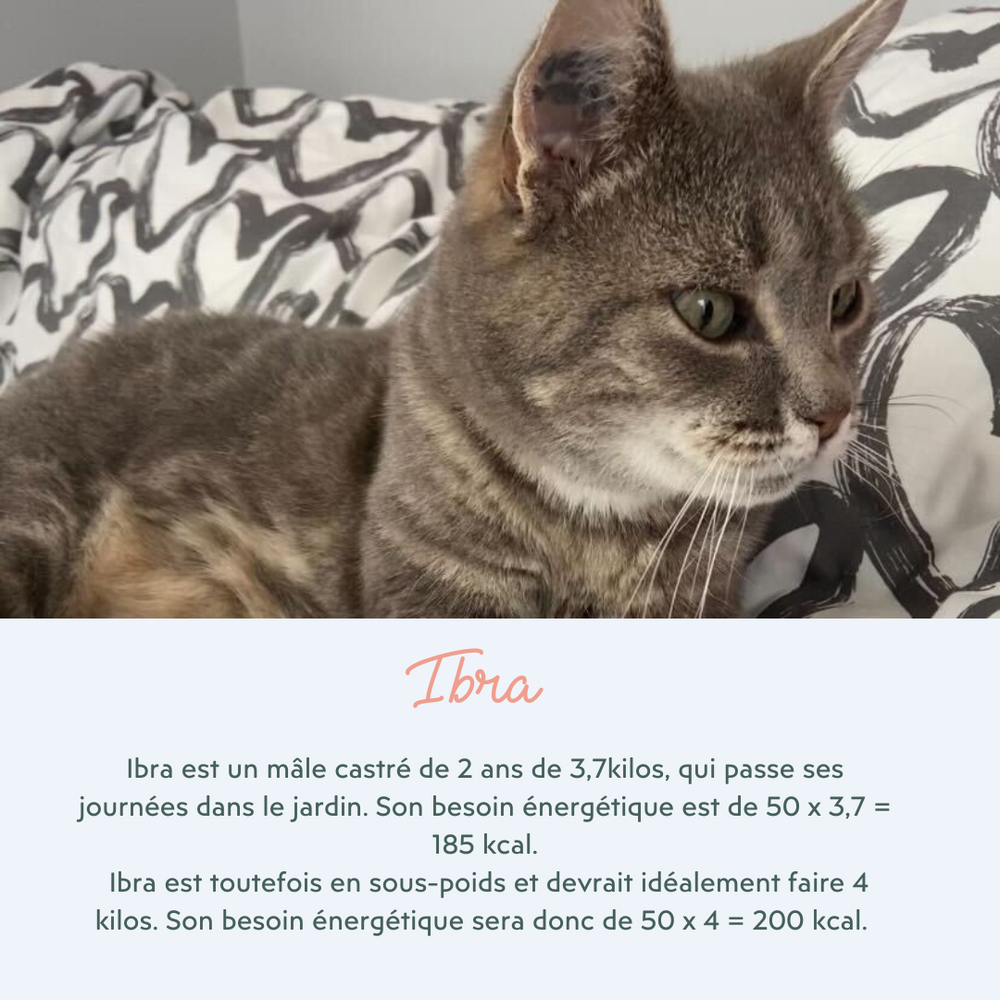
Note however that this is only the THEORETICAL energy requirement.
To get an accurate estimate of your whiskered cat's energy needs, it's worth pushing this calculation a little further. To help you (and avoid migraines), we've developed a personalized ration calculator . We calculate exactly what your cat needs.
Example for another cat, Rio:
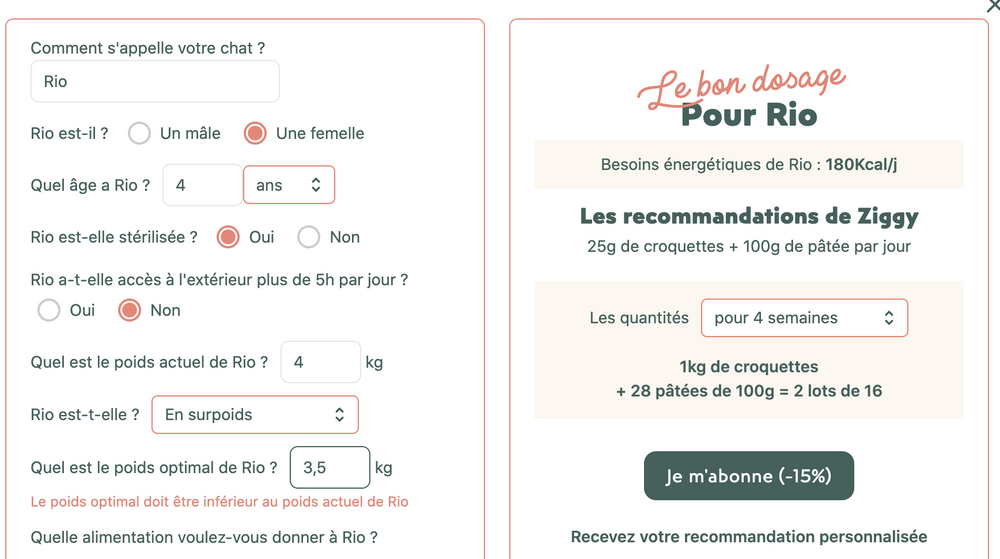
How many kibbles per day for my cat?
Nutrition is a science. At Ziggy, we have prepared a table for you to know the ideal quantities to give your cat each day.
Please note that the rations are calculated for a sterilized adult cat and based on the energy value of our recipes.
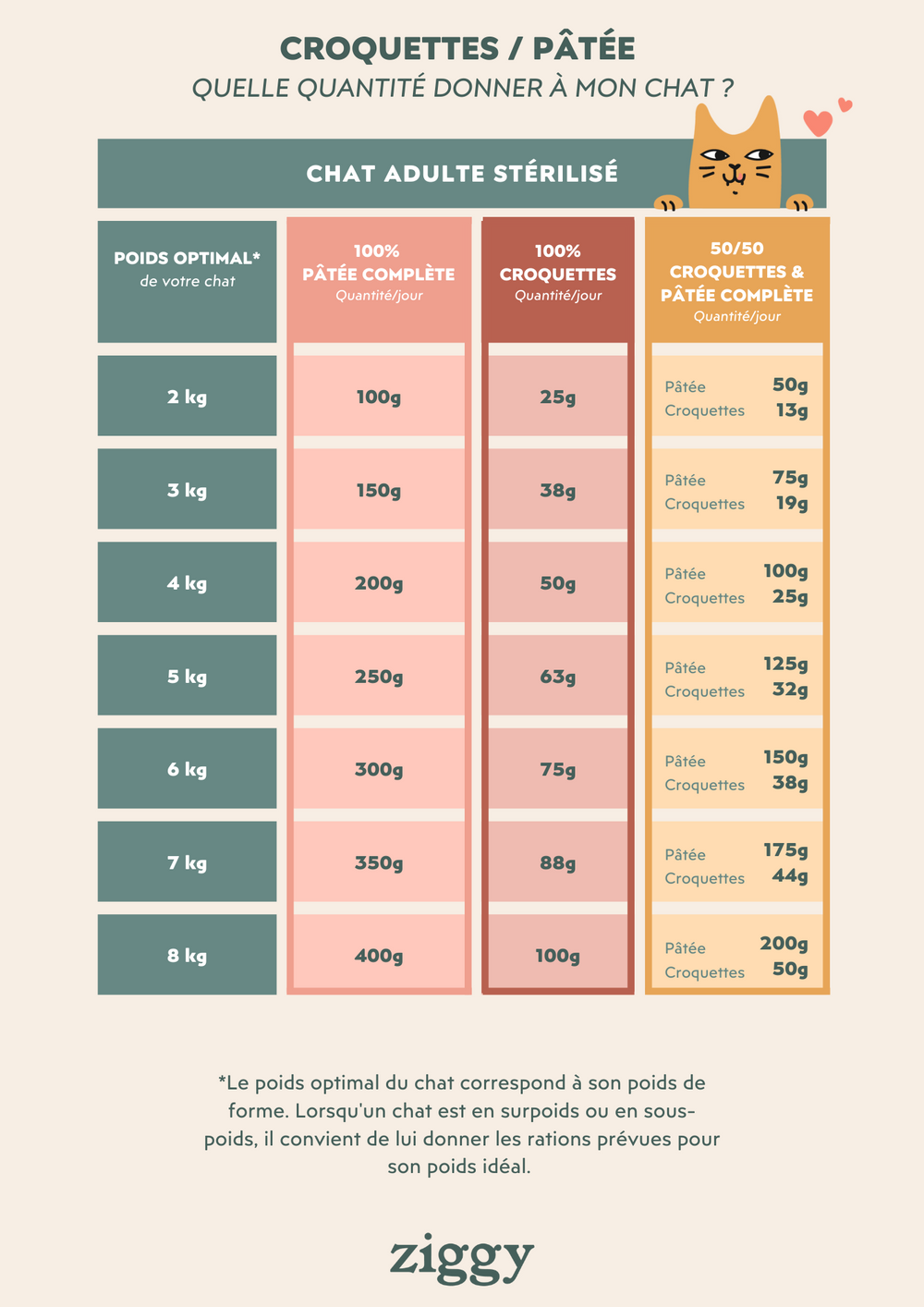
Croquettes, self-service or in small meals?
Our whiskers are small nibblers, meaning they eat several small meals during the day and night. In the wild, for example, a cat will eat rodents and other small prey, and thus eat up to 20 meals a day. Our living room tigers have retained this nibbling behavior, but instead of field mice, they have kibble.
Giving them self-service kibble (in the right amount) is therefore ideal. On one condition, however: that your cat knows how to regulate itself! Which is not the case for all our cats and kittens in our homes. Some cats have gluttonous behavior, rushing to their bowl. They devour all their kibble in a few minutes.
At Ziggy, we recommend that you divide his food into several small meals, i.e. 4 meals per day/night (kibble and pâtés). If you have to go out, you can give one portion in the morning and another in the evening. You can also invest in a fun dispenser.
My cat is still hungry, what should I do?
Our cats are particularly greedy creatures. So if your little cat is still asking for kibble, it may be because he is not satisfied enough.
In this case, you can:
- Add a few cubes of boiled zucchini to their food. Appreciated by our cats, this vegetable is rich in water and adds volume to the stomach.
- To promote satiety , we advise you to bet on pâté, and thus offer your cat a so-called mixed diet. Thanks to its high moisture content, it brings volume to its stomach. Your cat will be satisfied quickly and for a long time. Note that pâté is on average 4 times less caloric than kibble. By increasing the proportion of moisture in its diet, you can reduce the caloric density of its daily ration without your cat feeling like it is on a diet (in the event that it needs to lose a little weight).
- Another possibility: change kibble . Yes, some kibble is not nutritious enough for our little cats. Their current diet may contain poor quality animal proteins, low nutritional value, or too high a quantity of lipids (fats that are quickly metabolized by the body).
We explain everything to you in our article on proteins in your cat's diet .
At Ziggy, our kibbles are very rich in quality proteins (44%). In addition, they contain a minimum of carbohydrates (-24%).
Choosing the best kibble and pâté for your cat
Diet plays a fundamental role in the health of our little companions. Inappropriate and poor quality food is often the cause of many diseases in our whiskers: overweight, obesity, diabetes, kidney failure. So many pathologies that affect more and more cats.
To provide the best possible diet for your cat, we have prepared a complete guide for you. You will know absolutely everything about your companion's food: how to choose it well and, above all, how to avoid the pitfalls in order to offer your cat the best kibble and pâtés.


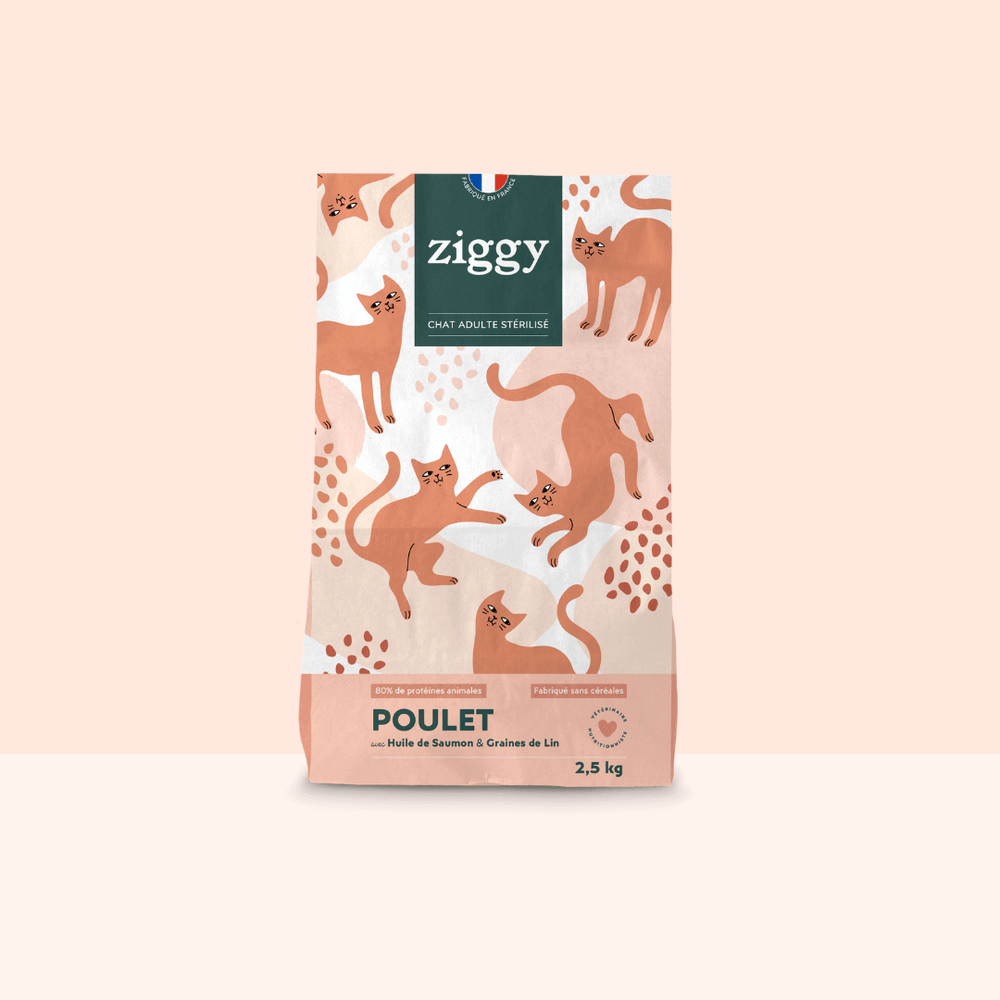
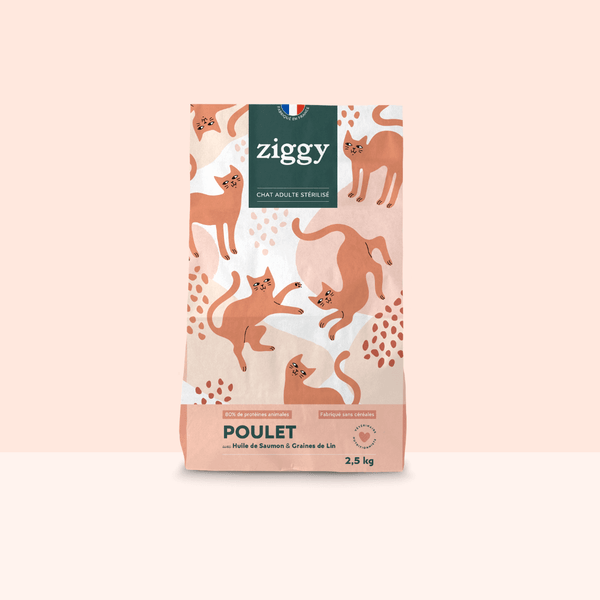

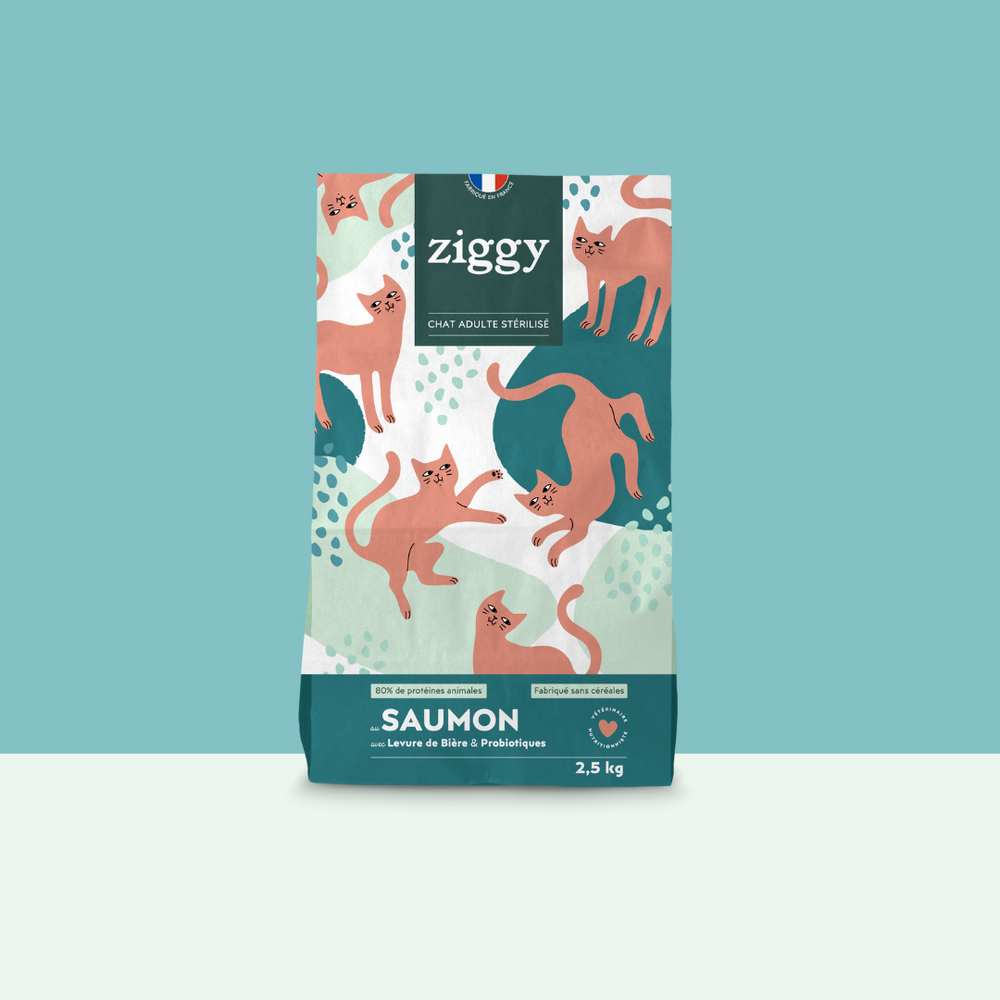
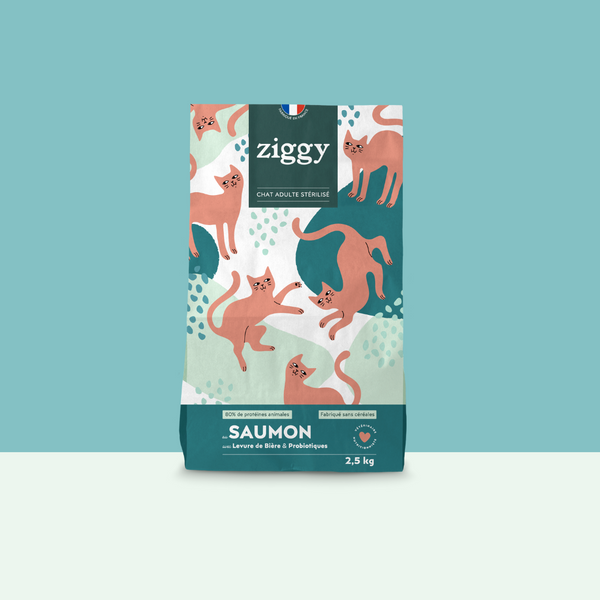

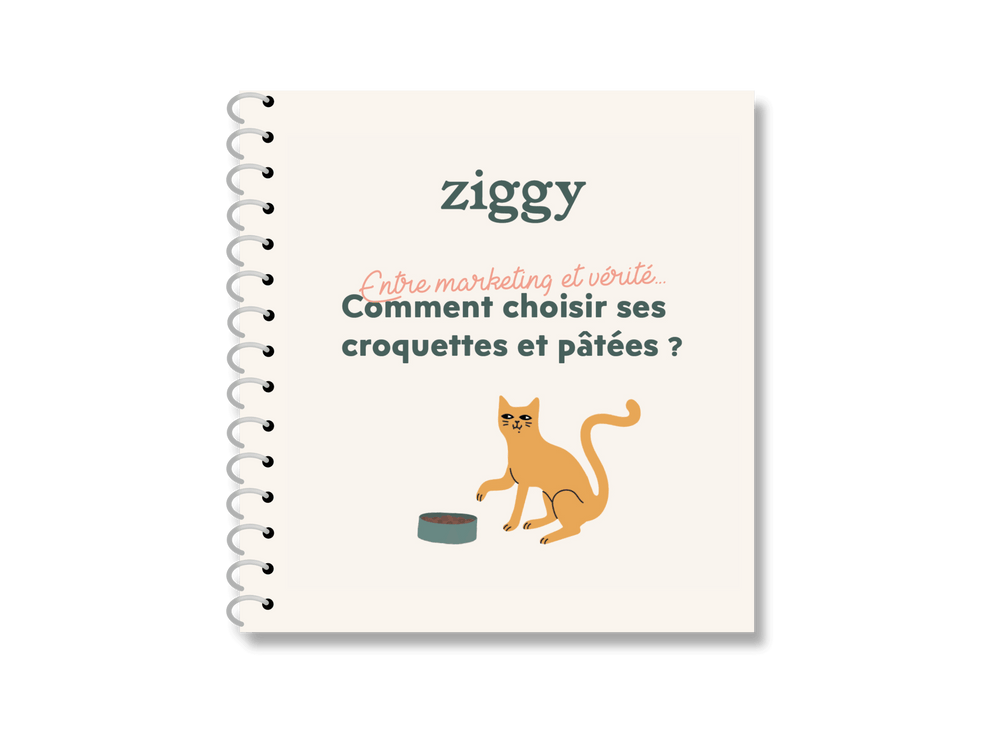
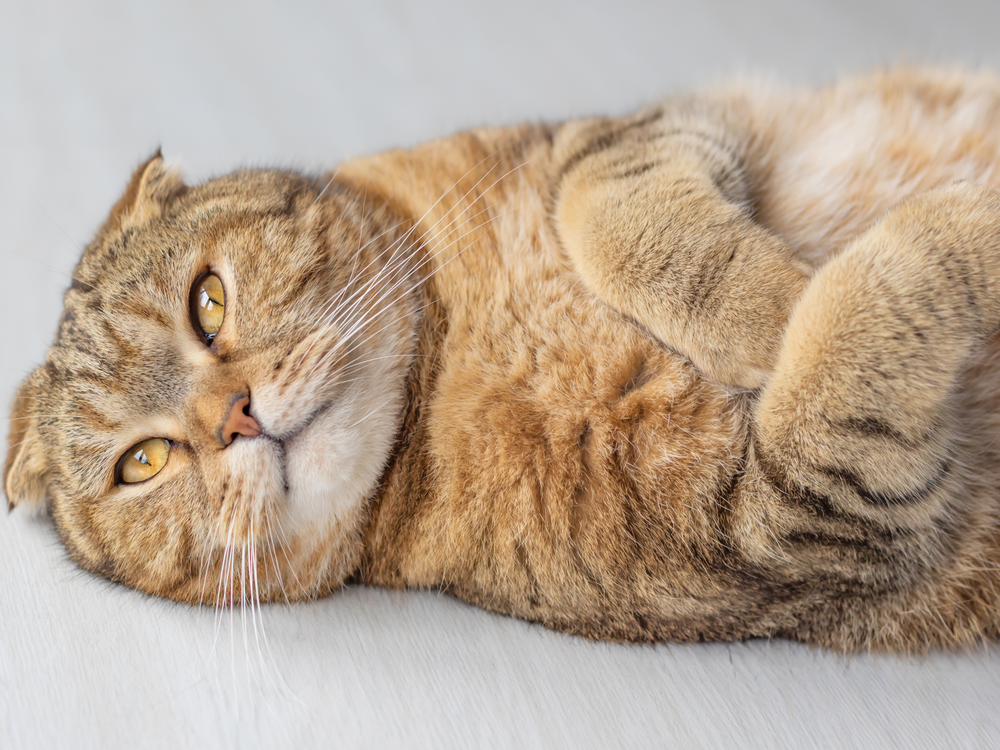
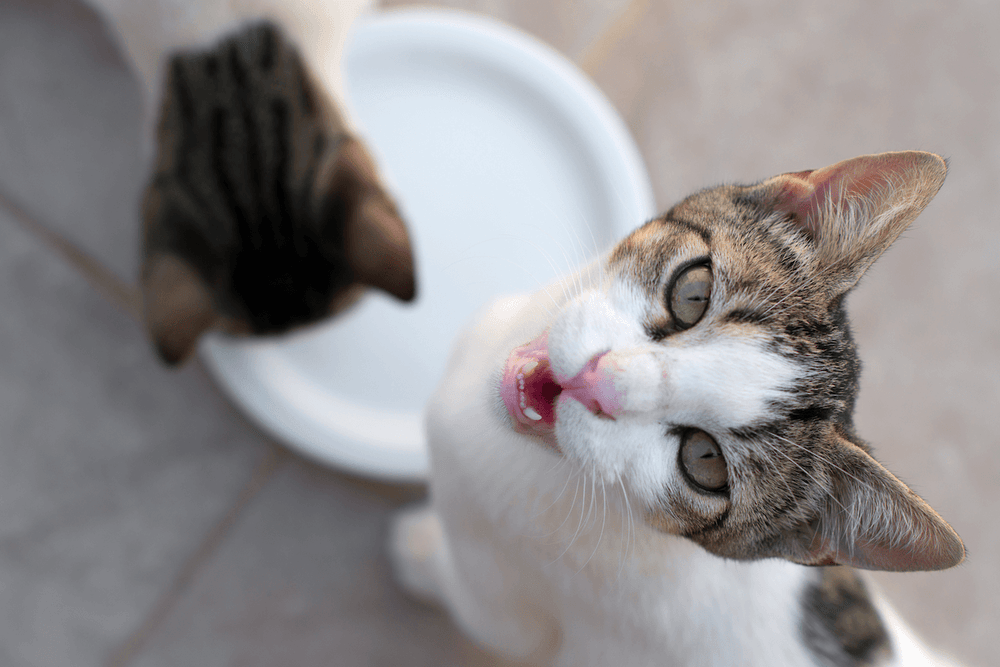
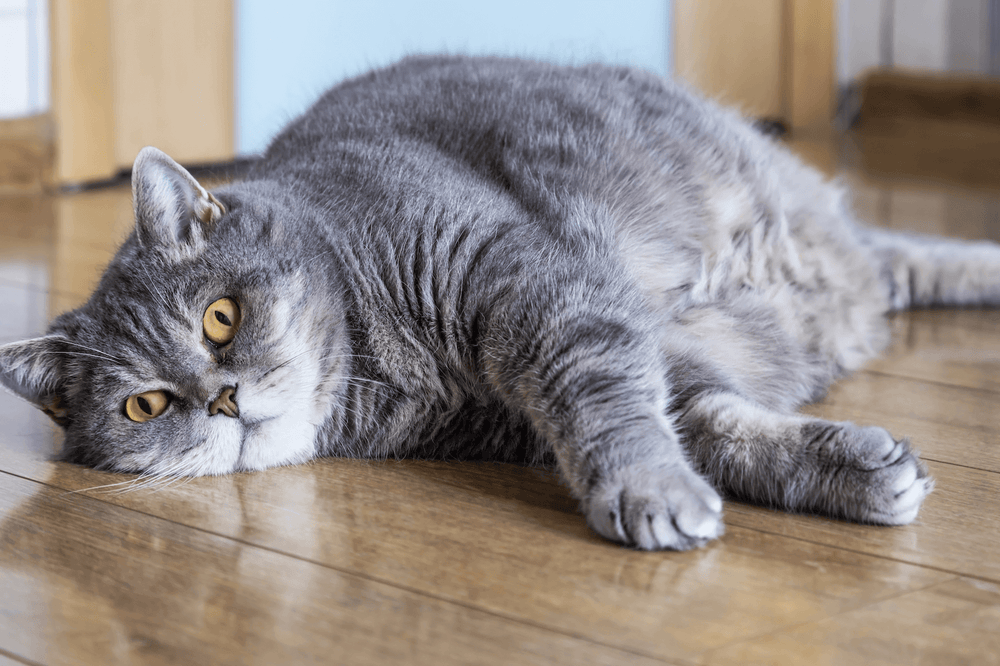
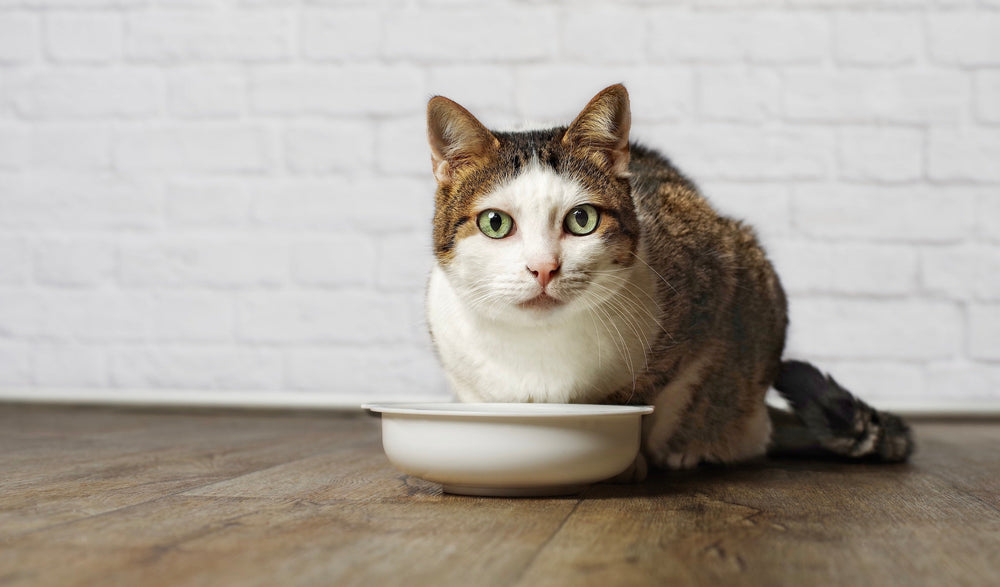
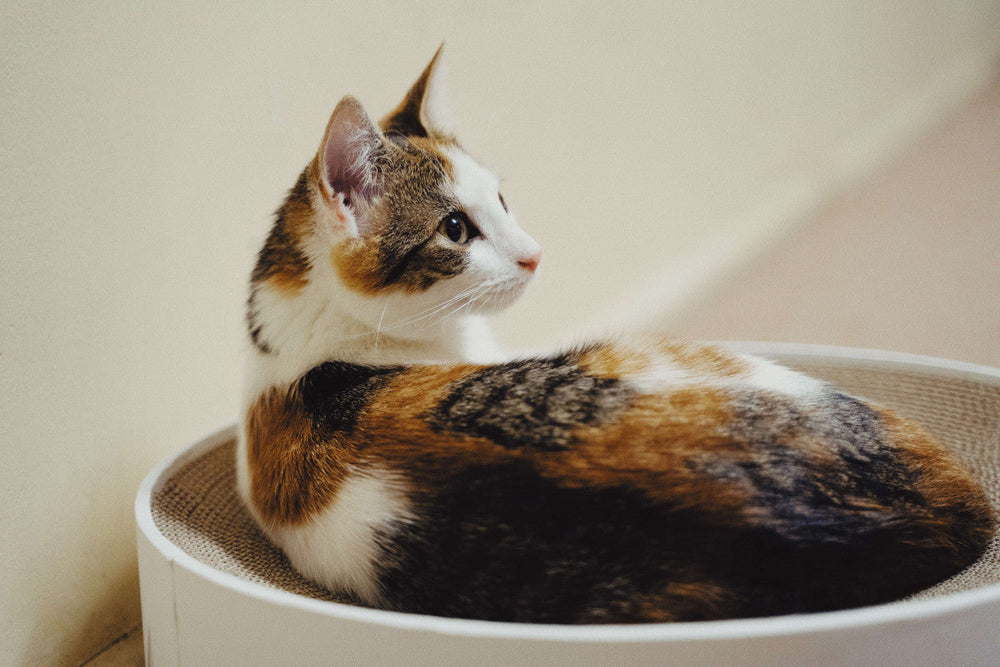
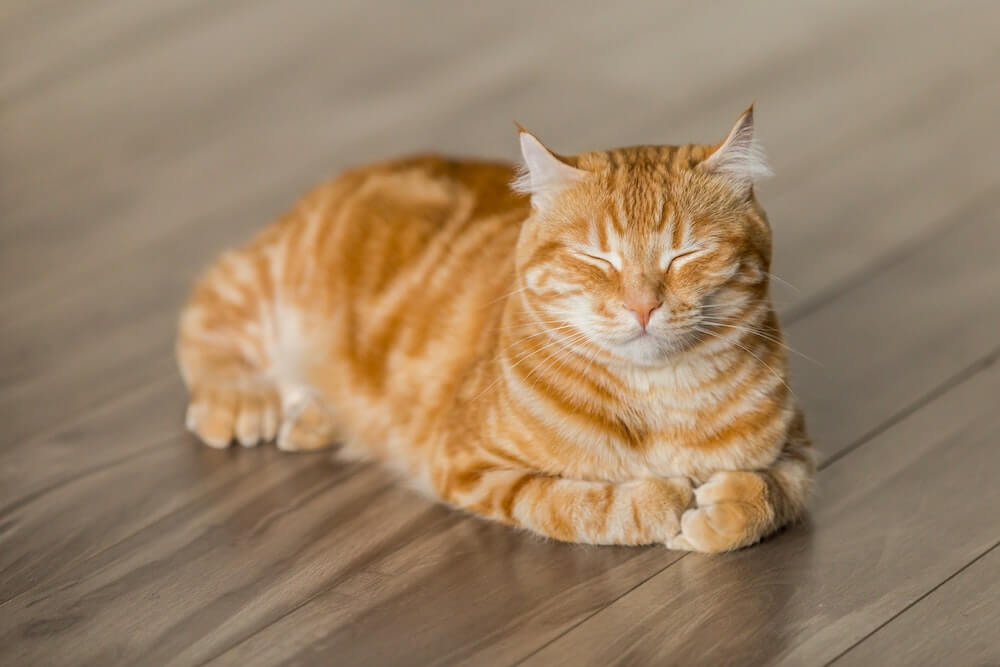


Bonjour Isabelle,
Latté doit tout simplement adorer ses pâtées Ziggy. 😻
Et c’est une très bonne chose, car la pâtée présente de nombreux avantages : contrairement aux croquettes, elle est très riche en eau, et par conséquent très hydratante pour nos félins, qui s’hydratent grâce à leur alimentation. Elle prévient les risques de troubles urinaires et réduit les risques de surpoids, d’obésité et de diabète, car elle est très peu calorique.
Vous pouvez offrir à Latté davantage de pâtée, en ajustant toutefois sa ration quotidienne de croquettes si vous le souhaitez. 💛
Plein de caresses à Latté. 😽
L’équipe Ziggy
Bonjour,
Latté mange croquettes et pâtées Ziggy. Il se régule sur les croquettes, mais depuis quelque temps, il engloutit la pâtée.
On lui donne moitié le matin et moitié le soir. Je n’arrive pas à savoir si c’est sa gourmandise ou s’il a besoin de plus de pâtée par rapport aux croquettes… Qu’en pensez-vous ?
Bonjour,
N’hésitez pas à nous envoyer un mail à hello@ziggyfamily.com. Nos super Cat Moms tenteront de trouver une solution avec vous 😺 En attendant, plein de caresses à vos deux petits chats. 💛
Mon chat de 5 ans mange des croquettes mais la petite de 9 mois en a.jamais voulue quoi faire
Leave a comment